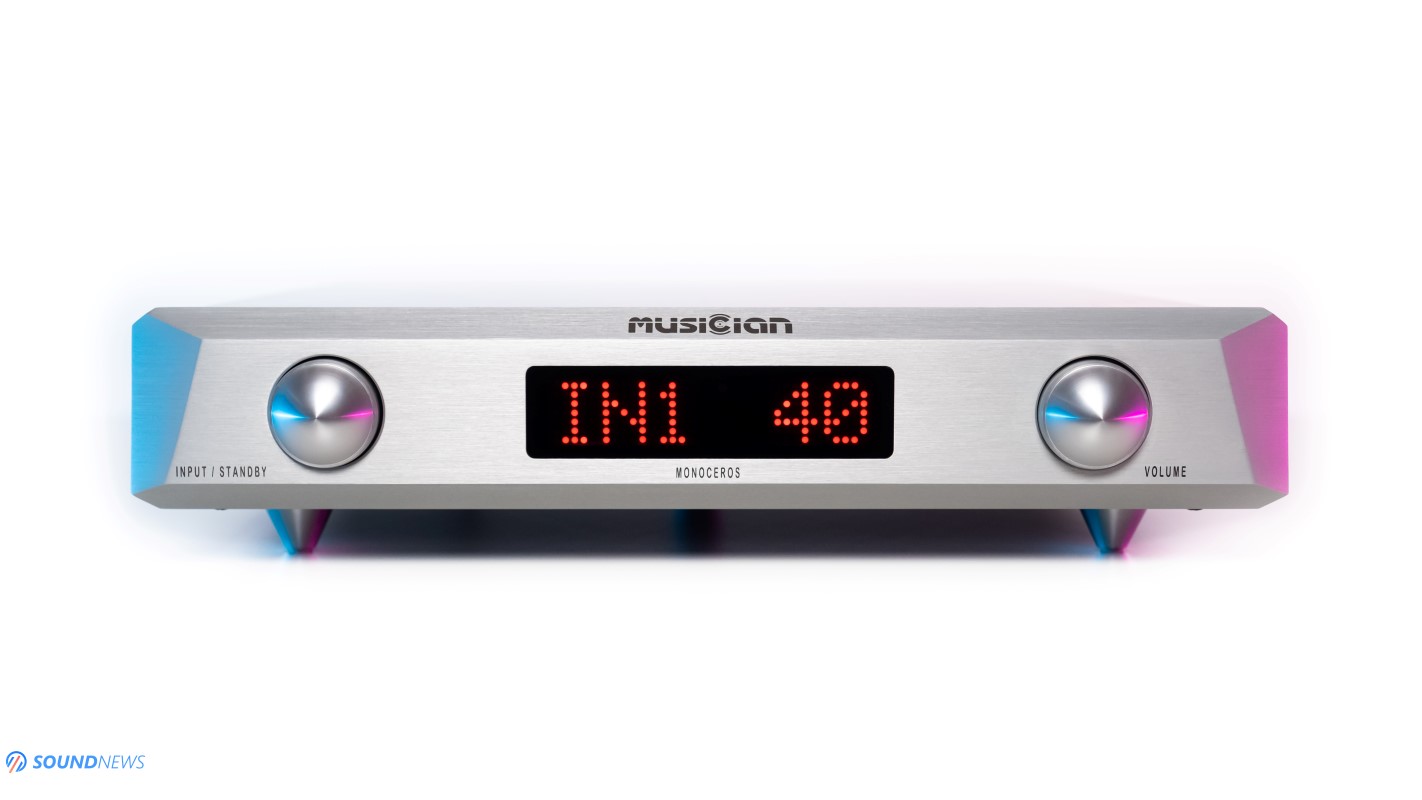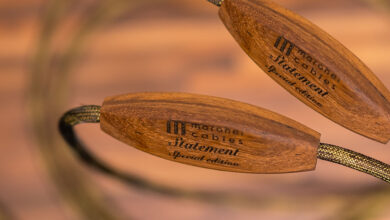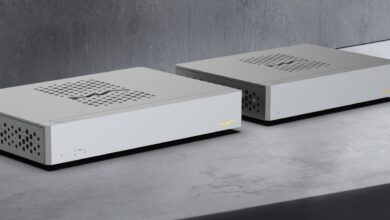Musician Monoceros Preamplifier Review – The Final Frontier for your Digital or Analog source
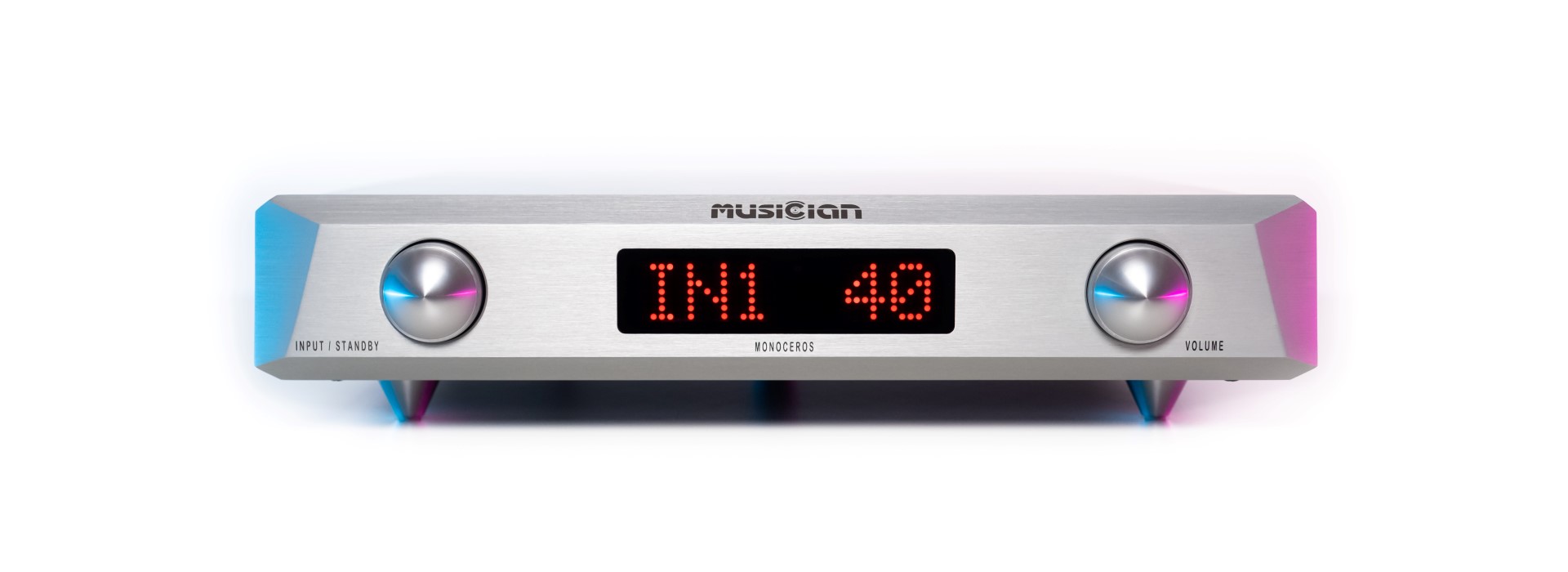
My Video Review:
Musician Audio never ceases to amaze me. Their first R-2R ladder DAC that saw the light of the day depicted a winged horse enchanted with magical powers and you’ve guessed it: it’s the pale-white Pegasus. One myth goes that Pegasus dug out a spring with his hooves, which blessed all those who drank its water with the ability to write poetry. I didn’t drink from that spring, but I was surely poetic while describing the sound of their winged D/A converter. With Pegasus in their hands (that we’ve tested here), Musician Audio challenged the simplest definition of a high-quality R-2R converter at an affordable price.
With the release of their Aquarius DAC, which depicted The Great One holding an overflowing vase, Musician Audio sent another message that music should be flowing indefinitely, smoothing out the rough edges, adding smoothness and flow to your stereo setup. With their best of the best, Musician Audio cemented themselves as formidable R-2R designers, crafting a high-end piece of kit from any point of view. Nonetheless, the mighty Aquarius is lacking one important skill: there is no way to control its volume, that’s the Achilles Heel that plagues most R-2R converters of today. I’m not using integrated amplifiers that often, meaning that a preamplifier would be mandatory in my setup, so I could control my dual-mono power amplifiers.
Musician Audio hinted several times that a top-class preamplifier will be coming shortly elevating their Aquarius and Pegasus to higher peaks. A few months passed and the long-awaited Musician Monoceros preamplifier hit the market. Mono-ceros is a compound word from monos – single and keras – horn, which depicts a relatively young triple star constellation that William Herschel discovered in 1781 and called as “one of the most beautiful sights in the heavens”.
Monoceros isn’t your ordinary preamplifier, but an over-the-top unit that carries a fully balanced signal path from input to output, four ladders of high-precision resistors and plenty of high-quality Omron analog-relays will be controlling its volume. The line-amplifier stage uses only discrete components without a single op-amp in the signal path, all biased into a Class-A working principle. Its power supply is equally impressive. Using a combination of switching mode power supplies and a single copper transformer, stabilized with an obscure number of voltage regulators and filtered by some of the best capacitors in the business, Monoceros isn’t shooting for “another boring preamplifier” badge, but for a top-spot in our ranks. Musician Monoceros goes for €1300 in Europe and for $1170 in the rest of the world and I’ll make sure to prepare an in-depth look and a must-read comparison at the end. Before I move on to my sound impressions, let’s unbox it and see what’s inside.
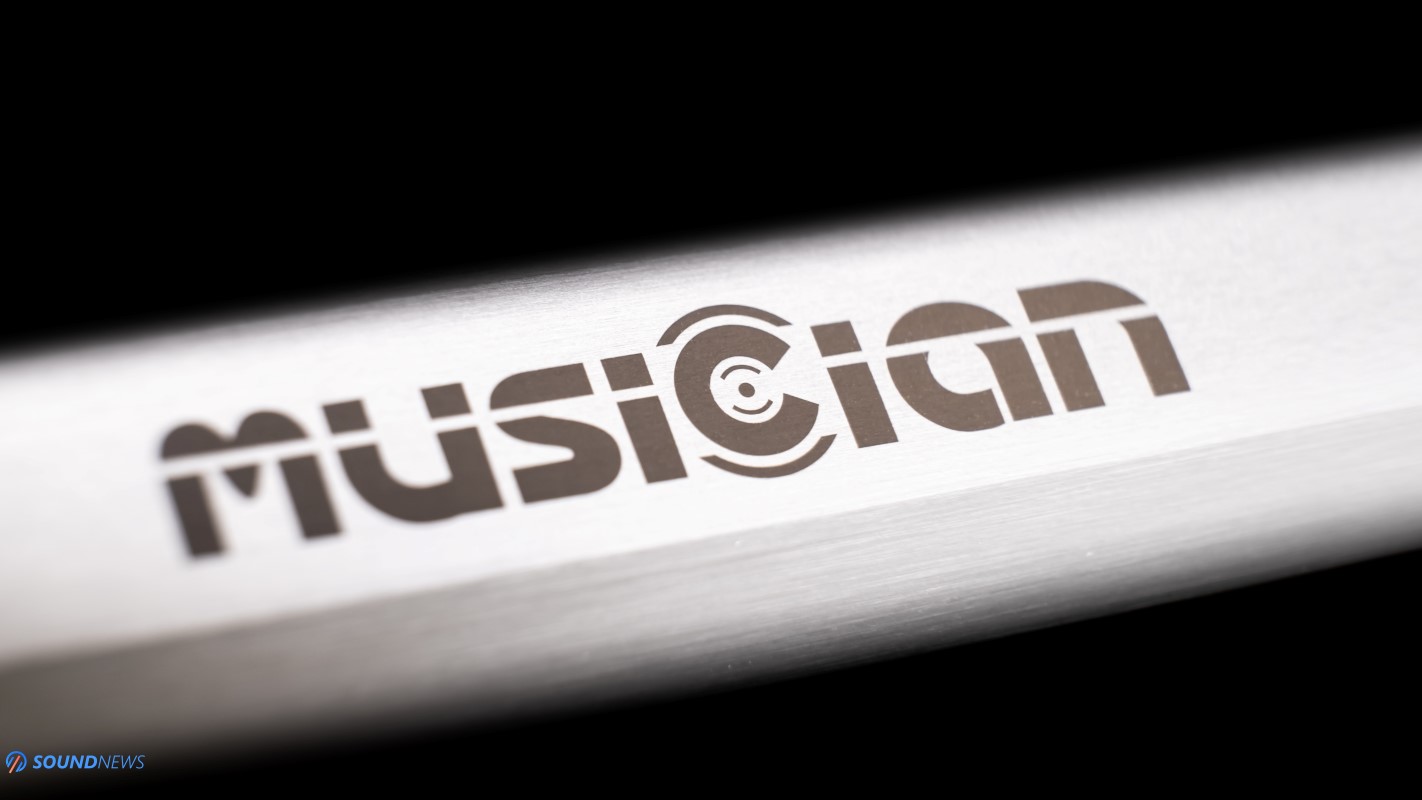
Unboxing & Package Contents
Knowing its class-A working principle and all the stuff that makes it tick, I’ve already pictured an oversized box arriving at my front door and let’s just say that I wasn’t disappointed when a huge box, courier’s cap, hands and legs appeared in front of me. Monoceros is their biggest and their heaviest unit yet and as you can imagine it came in a double boxed fashion – a usual affair with high-end audio. Musician Audio is wrapping all their units with absurd quantities of foam for a nicer protection. Inside its box you’ll find a solid remote control carved out of aluminum and a user manual. This is all you need to start your listening session, but let’s check first how it looks and then what makes it so interesting.
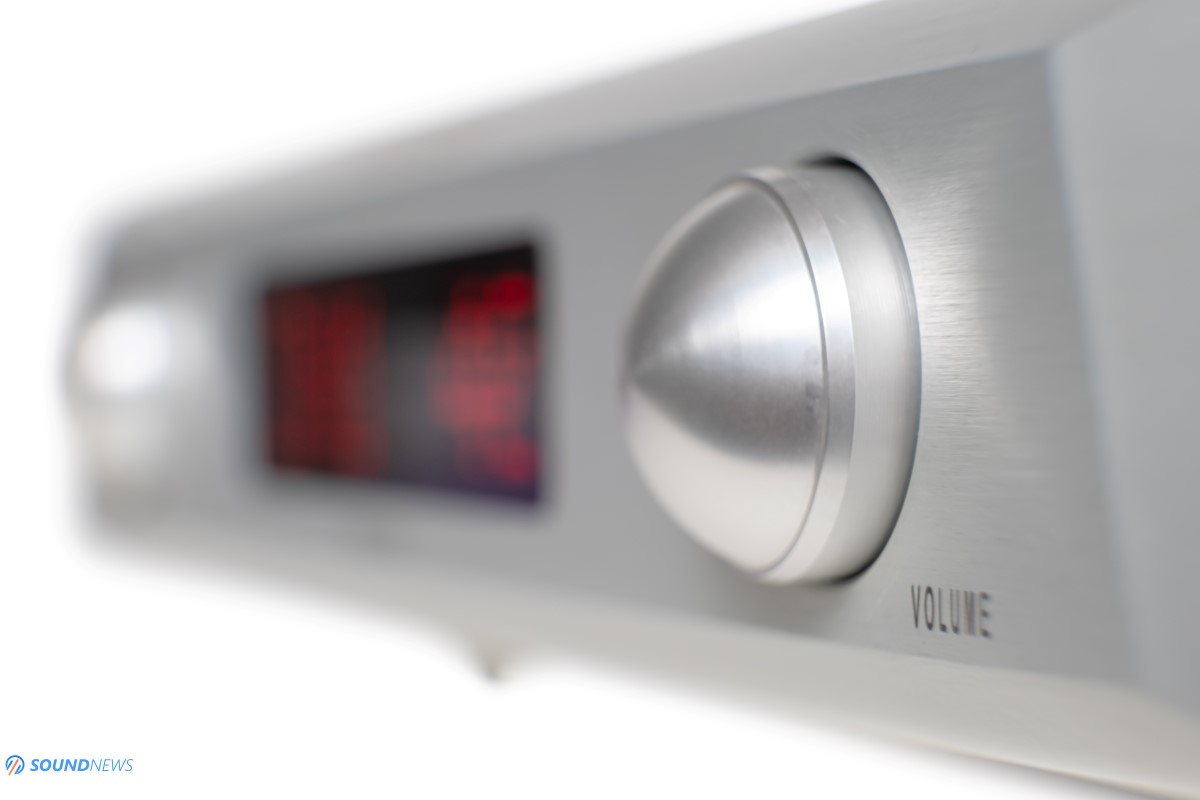
Design and Build Quality
Musician Draco, Pegasus and Aquarius R-2R DACs have a single but important function: converting zeroes and ones into butterflies in our stomachs. All those units can work only as D/A converters and if you’re using power amplifiers only as I do, a preamplifier is mandatory to control your volume. Enter their most wanted component of the year: the Monoceros preamplifier.
Monoceros borrows the same design cues from their D/A converters, it has the same height and width with Aquarius, matching its legendary build-quality. It is only deeper, heavier and better looking to me. It screams Musician Audio from afar thanks to its smooth lines, thick metal plates and bold looks, you can’t remain unimpressed by its no strings attached minimalist look. It uses CNC machined metal plates on all sides and it will easily protect against all wireless interference.
You’ll find the usual metal cones put in a Bermuda Triangle configuration, that will null nasty micro-vibrations thanks to its gel absorption pads. Its front plate has a serious thickness of 1.5 cm and its overall structure feels rock-solid and well put together, exactly how a high-end unit should look and feel. All of my testing would take-place in my living room, where a 4-antenna wireless repeater is located, including two streamers, luckily Monoceros isn’t picking any of that noise, thanks to its impenetrable Zumwalt-class casework.
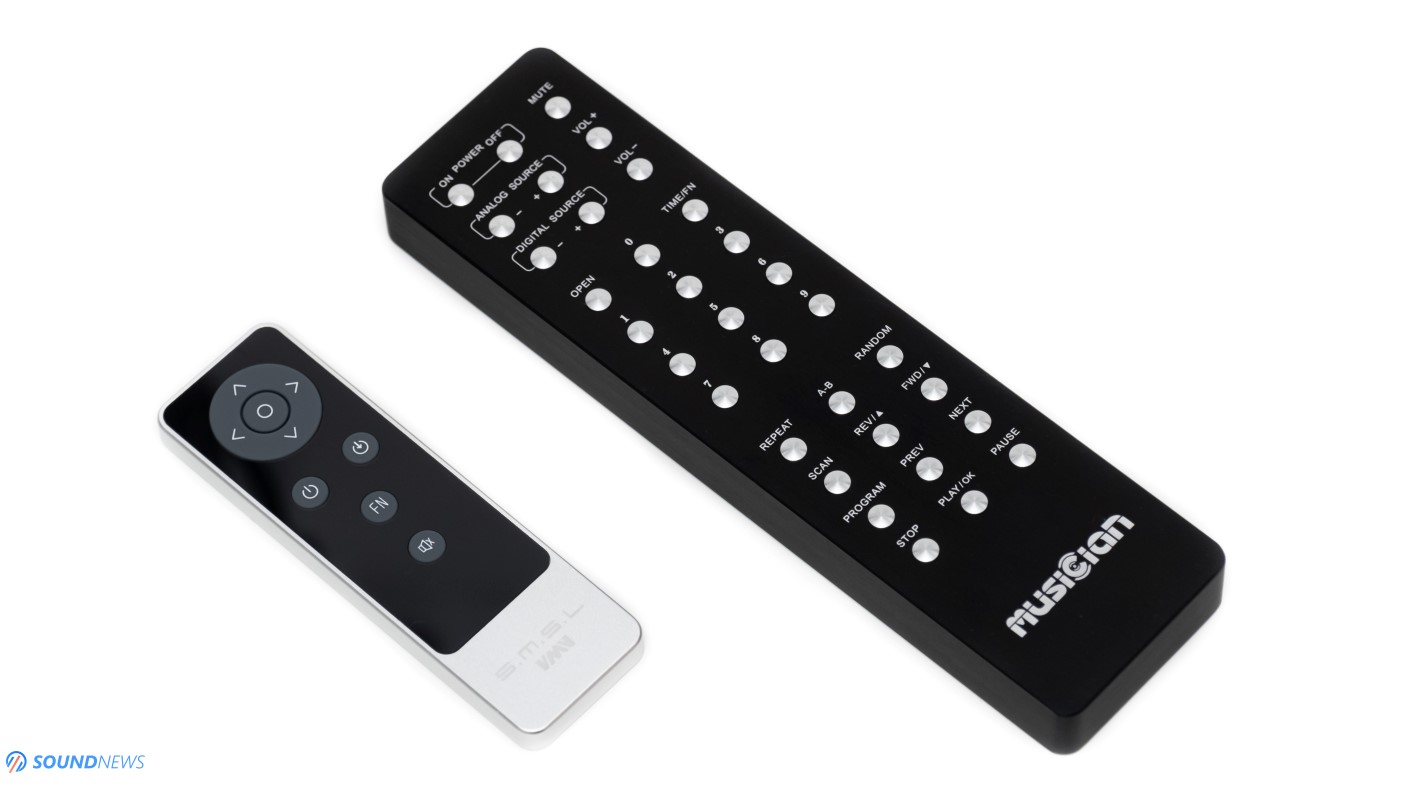
Moving all its screws to the back-plate was mandatory for a much cleaner look. On its front I’m greeted with a beautiful display that uses multiple low intensity LEDs that aren’t bothering in the dark. I’ve got the raw-silver anodized version; Musician is also offering it in anodized black. Its laser engraving seems to be precise and easy to read from afar.
Aquarius consumes 20W, meaning that heat dissipation shouldn’t be a big concern even in longer listening sessions. After a week of music playback, it got barely warm, you can put anything on top of it, even power amplifiers if you will.
So far, Monoceros is the biggest preamplifier I’ve tested at my place, but isn’t uncomfortably large and heavy. At about ~6 kg or 13.2 lbs and at 330 x 320 x 75 mm (including its feet), it is on the bigger and heavier side, but it can still form an elegant looking stereo setup. Its dimmed LEDs draw little to no attention, blending nicely in the living room and leading to a high WAF. All in all, it feels like a rock-solid device that should withstand the test of time.
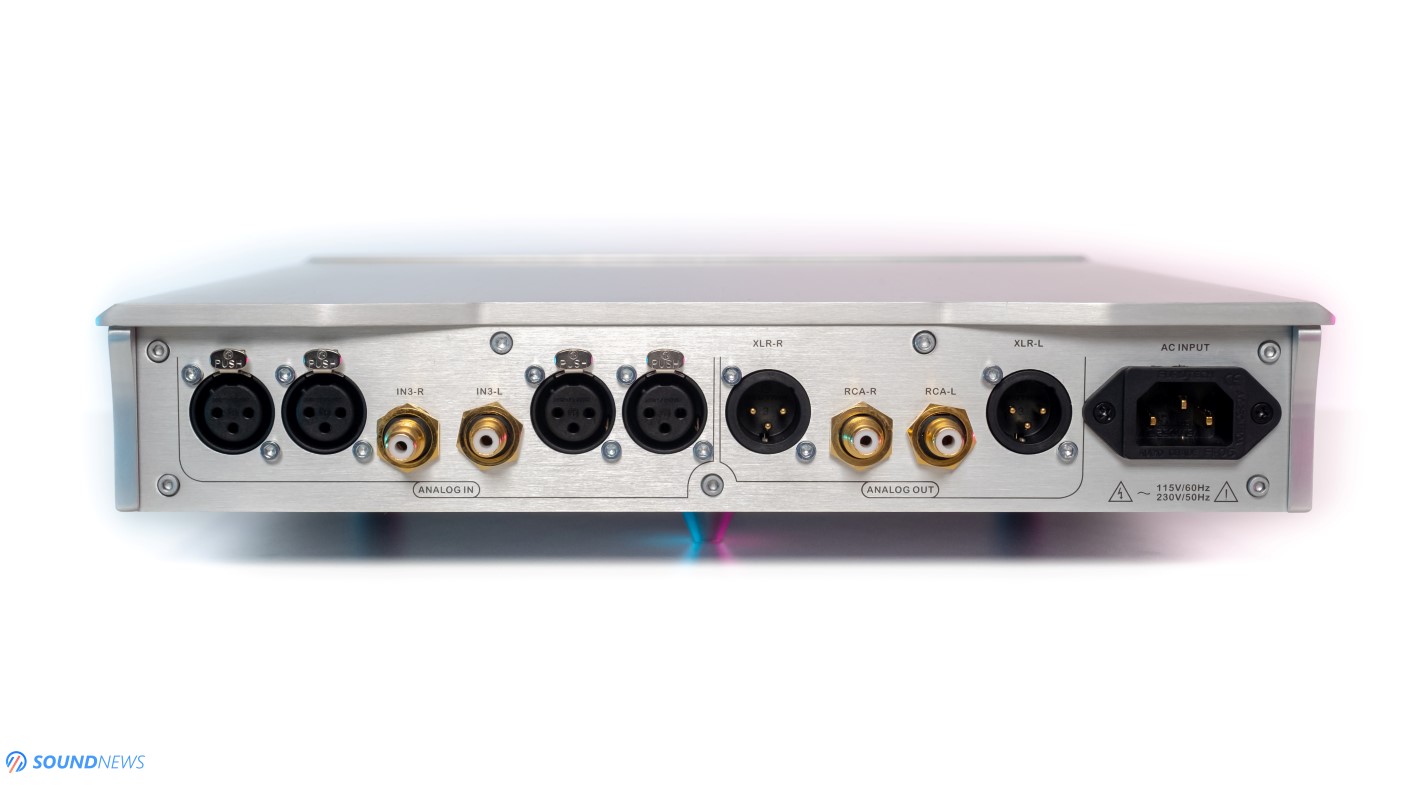
Controls & Connectivity
Its sole job is pre-amplifying and conditioning the incoming analog signal and then send it to the next component from the chain. It’s a simple and straightforward device with no additional features. On its front plate you’ll find an On/Off button that works as an analog input selector, in the middle there’s a big screen that offers great visibility in the dark and on the right you’ll find a volume wheel based on a precise ladder of resistors and top-class analog relays.
On its back you can spot a pair of RCA and two pairs of XLR inputs, meaning that you can connect up to 3 sources at once. As for outputs, there’s a pair of RCA and XLR outputs and both can used simultaneously. If you’re using bookshelf speakers with a powered subwoofer, that RCA output might come in handy, so please keep that in mind. I’m pleased that Musician Audio added multiple XLR inputs, since I have several digital sources and sometimes, I’m comparing them or I’m just switching between them. With two XLR inputs it becomes a much easier job doing comparisons in the same loudspeaker setup.
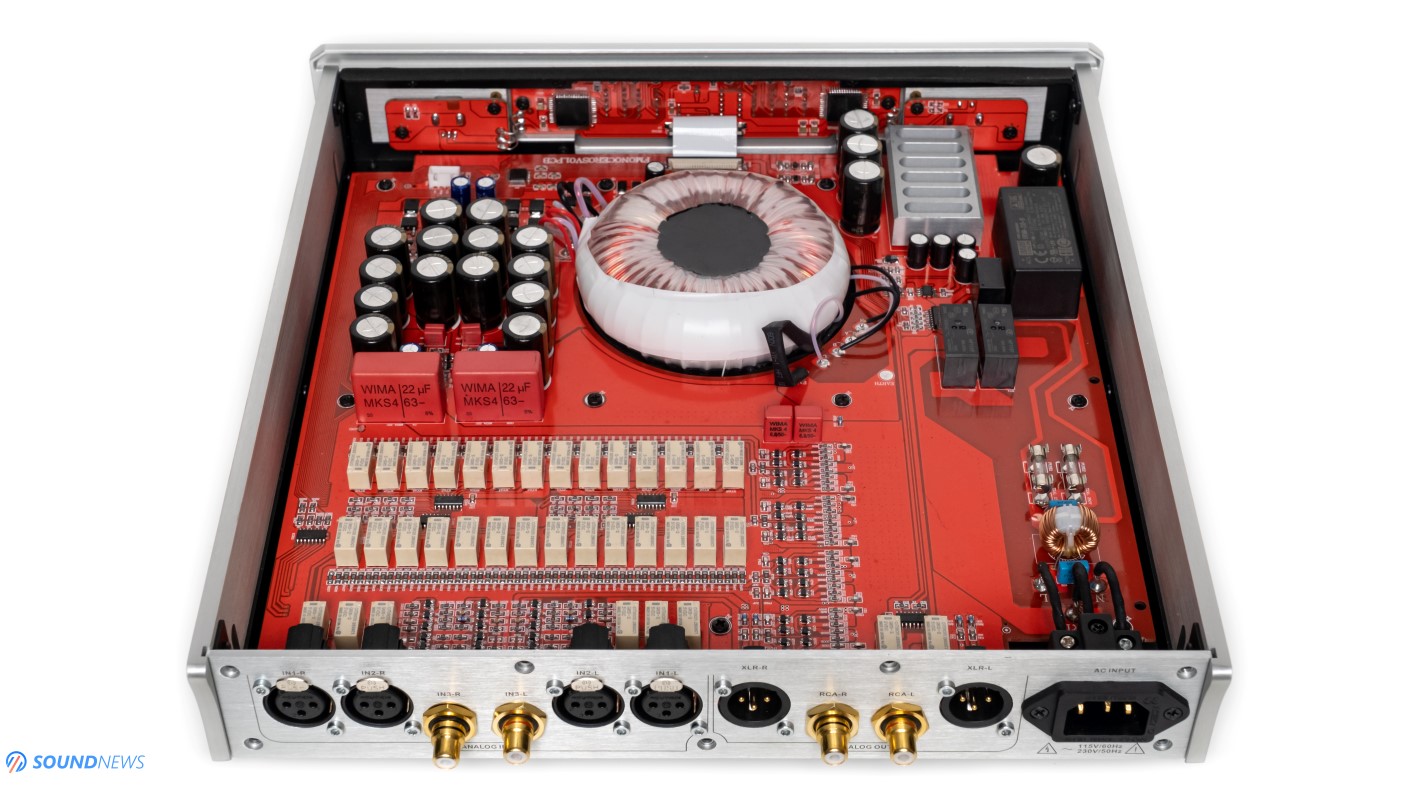
Under the Hood of Monoceros
I must say that after opening its case, I’ve checked again if I didn’t pop the hood of the Aquarius R-2R DAC, because frankly, they share a lot of things in common. A big portion of its PCB design takes several ladders of resistors built in a true balanced configuration. Musician used the highest precision resistors that wouldn’t alter the incoming signal in any possible way. It’s important to know that only a single resistor per channel will be working at any given time and volume level, followed by Omron analog relays that you can find in the best preamplifiers of today. I have the same relays in the $3000 Benchmark HPA4 and in the $2550 Flux Lab Acoustics Volot and I already know what to expect from them: an extremely precise channel matching. This is a high-end volume implementation with no cutting corners, always working in the analog domain and never interfering with the source that is being connected to it, since a constant output impedance would never compromise the output in any possible scenario.
Its analog relays are clicking and you can hear them from afar, but it doesn’t bother me at all, as my other two preamps are doing the same. Those four ladders of resistors are controlled by a micro-processor that is always checking and adjusting its operating parameters, which greatly reduces harmonic distortion and improves the ability to carry lower resistance loads. Its volume control offers exactly 60 steps of travel for your source and they used only matched resistors for a world-class channel balance, resulting in a THD of just 0.0003%.
Its power supply design is equally impressive and it is very reminiscent of their Aquarius R-2R DAC. You’ll find the same Meanwell switching mode power supply that works as the first mains filter, an oversized 60Watt single copper transformer follows, it uses separate windings for left and right channels. The final DC voltage is then rectified with diodes and then stabilized with an obscure number of voltage regulators. The final power filtering stage uses a substantial amount of high-end ELNA Silmic II capacitors – these are some of the best current production capacitors money can buy.
Its input and output circuitry are based on discrete components, without a single op-amp in the signal path. The whole analog circuit is biased into Class-A, consuming constant power at all times, for a better definition and detail retrieval at low-level listening. The signal path is completely DC coupled and there aren’t coupling capacitors to be find, meaning that the analog signal flies instantly to your power amplifier with minimal loss in timing.
Considering all the materials being used, its case work, its discrete components, its tens of analog relays, its overkill power supply design and filtering stages, Monoceros is without a single doubt one of the most impressive preamplifier I’ve tried at my place.
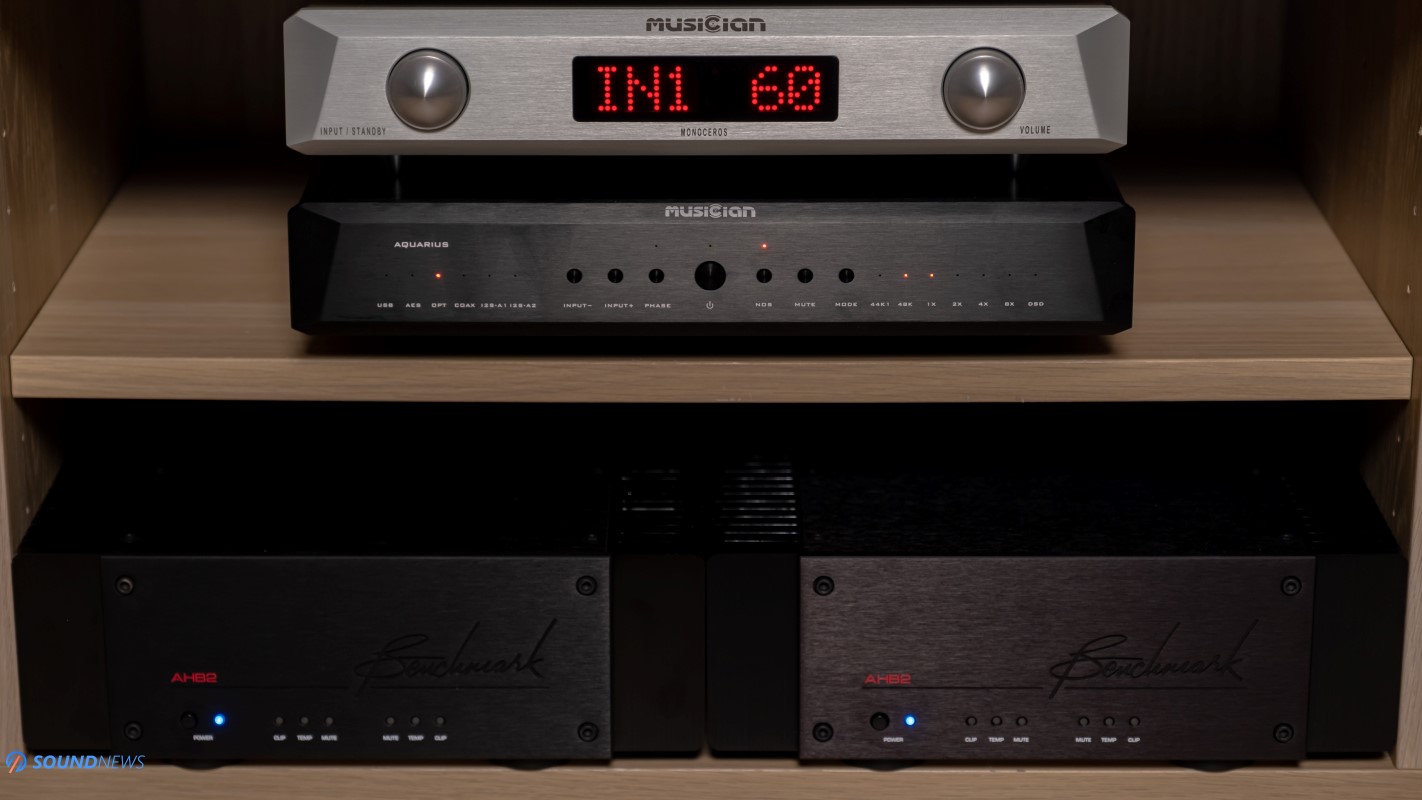
Test Equipment
Shortly after posting my Musician Aquarius DAC review, I’ve wondered how it would perform in a loudspeaker setup with its dedicated line-amplifier and finally! A day came when my dream came true. Most of the time Aquarius was singing tunes to the Monoceros, for a perfect family reunion, driving two Benchmark AHB2 power amplifiers in a dual mono configuration.
My weapons (loudspeakers) of choice were the KEF Reference 3, the Natural Sound NS17 or the Sound of Eden Crescendo UNO bookshelf (don’t search for them, their webpage isn’t live yet). Musician Monoceros is replacing a Benchmark HPA4 and I’m very curious if the final outcome would change in any way. I’ve tried three additional D/A converters with the Monoceros: The Matrix Audio Element X, the Gold Note DS-10 Plus and lastly the Audiobyte HydraVox stack. Alright folks, my body is ready for some music, so let’s get some!

Sound Performance
I. Do you really need a preamplifier?
A preamp is a pre-amplifier that is designed to amplify the weaker analog signal coming from your source by making it louder – by raising the voltage and prepare it for the next stage – for the power amplifier that follows. Pre-amplifiers are designed to accept a wide range of impedance, but they will always output a low impedance, in order to fully preserve the signal-to-noise ratio of the source. Power amplifiers don’t like very high-impedance signals coming into them, as they will need to work harder to achieve the same SPL, thus increasing the Total-Harmonic-Distortion.
A preamplifier can start its life as a simple volume control for you analog or digital source, usually that is called a passive preamplifier. Older preamplifiers could be more interesting, as they usually have tone controls (bass, mid and treble controls), maybe some low-pass filters so you could integrate a sub-woofer, some could offer high-pass filters and other functions like muting, dimming, stereo to mono conversion. However, the more features a preamplifier would have – the longer the signal path would be, resulting in a less transparent sound and in a higher THD. Hence, you no longer see modern preamps carrying such features. Some companies behind their preamps might have different philosophies altogether…one might want to color your sound, by the help of tubes or discrete transistors, while others don’t want to color the sound in any way and leave it as clean as possible. I am already using such type a preamp for the last two years by the name of Benchmark HPA4.
Before I’ll tell you how Monoceros performs in my stereo setup, you should understand that I’m listening to my whole stereo setup and not only to the preamplifier itself. Aquarius does all the heavy lifting that is being pre-amplified by the Monoceros, two mean sounding Benchmark AHB2 put in a dual-mono configuration are sending juicy watts to three pairs of loudspeakers, but mostly to the Reference 3, which I know very well, down to the smallest details.
The most important thing to know is that Monoceros will behave differently with different type of DACs. Those that have a lower voltage to the industry standard 2V via RCA and 4V via XLR and a much higher impedance (past 200 Ohms) like their Aquarius, Pegasus and Draco converters will benefit the most with a unit like this. Some other DACs already have dedicated pre-amplifier stages – like the Matrix Audio Element X and the Gold Note DS-10 Plus and naturally, such units will benefit a lot less or not at all from an external preamplifier. Most of sub-$2000 digital sources you see today on the market are using a simplified digital attenuation circuit to control their volume. However, in practice a design like that hurts signal-to-noise ratio, lowering resolution when their volume wheels are being touched and such units would again benefit greatly with a preamp.
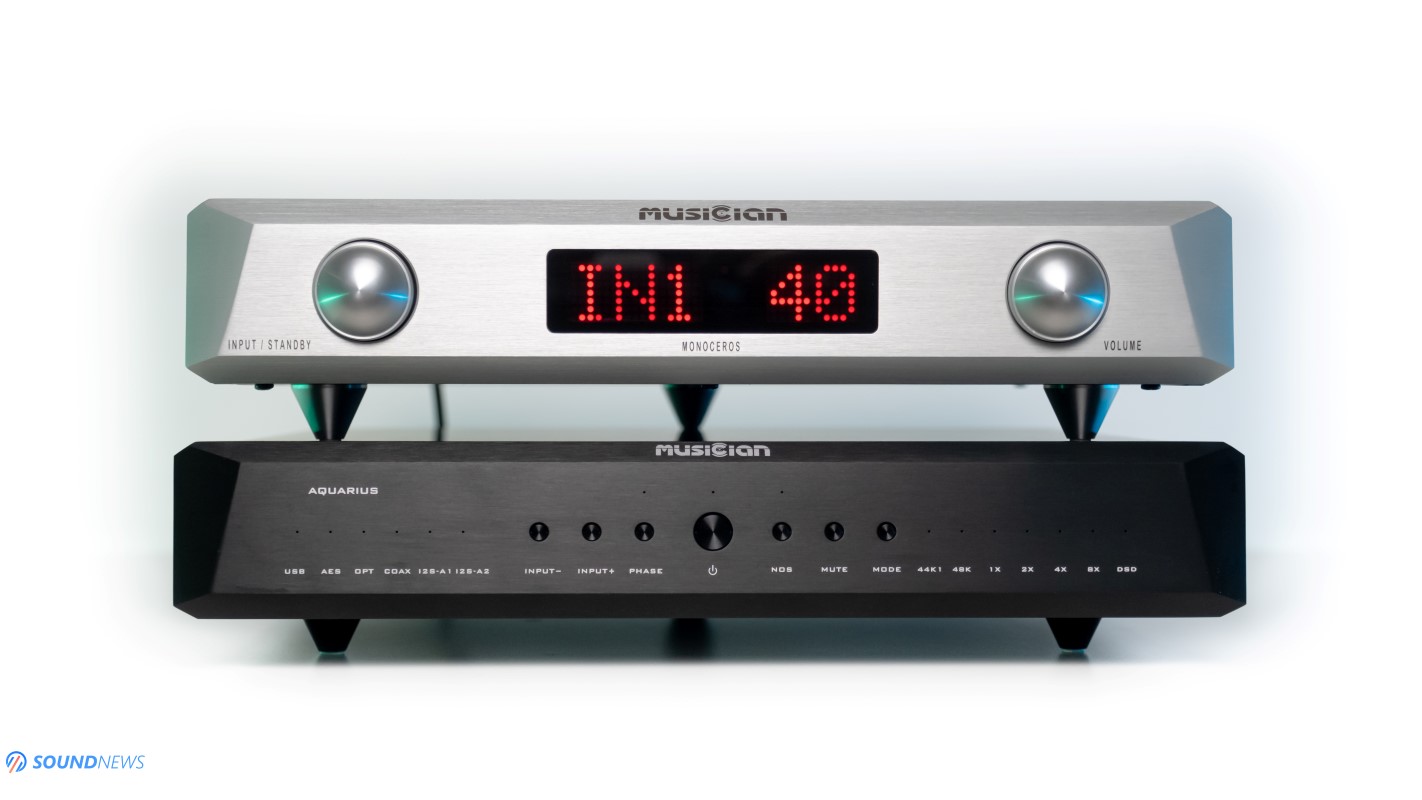
II. Sound Impressions
Aquarius is an outstanding DAC on its own and could stand shoulder to shoulder with much pricier units, but its biggest drawback is a lack of a preamplifier circuit. It seems that most R-2R manufacturers out there are choosing not to include a preamp stage in their units and I don’t blame them for that. It keeps production costs down and not every single individual needs a preamplifier. People are mostly using integrated amplifiers in their living rooms and of course there’s the headphone mafia that will never use such a unit. Just look around, as most R-2R units below the $7000 mark don’t offer preamplifier capabilities, not even the Audio-GD R7 HE Mk2 ($3900), the Holo-Audio May (up to $5500) or the Denafrips Terminator Plus ($6500). Yet…there’s one legendary R-2R DAC maker that adds preamplifier circuits in their units. Their HQ is close to me, but that’s a story for another time… something Big would be coming to Soundnews HQ and all will be revealed soon.
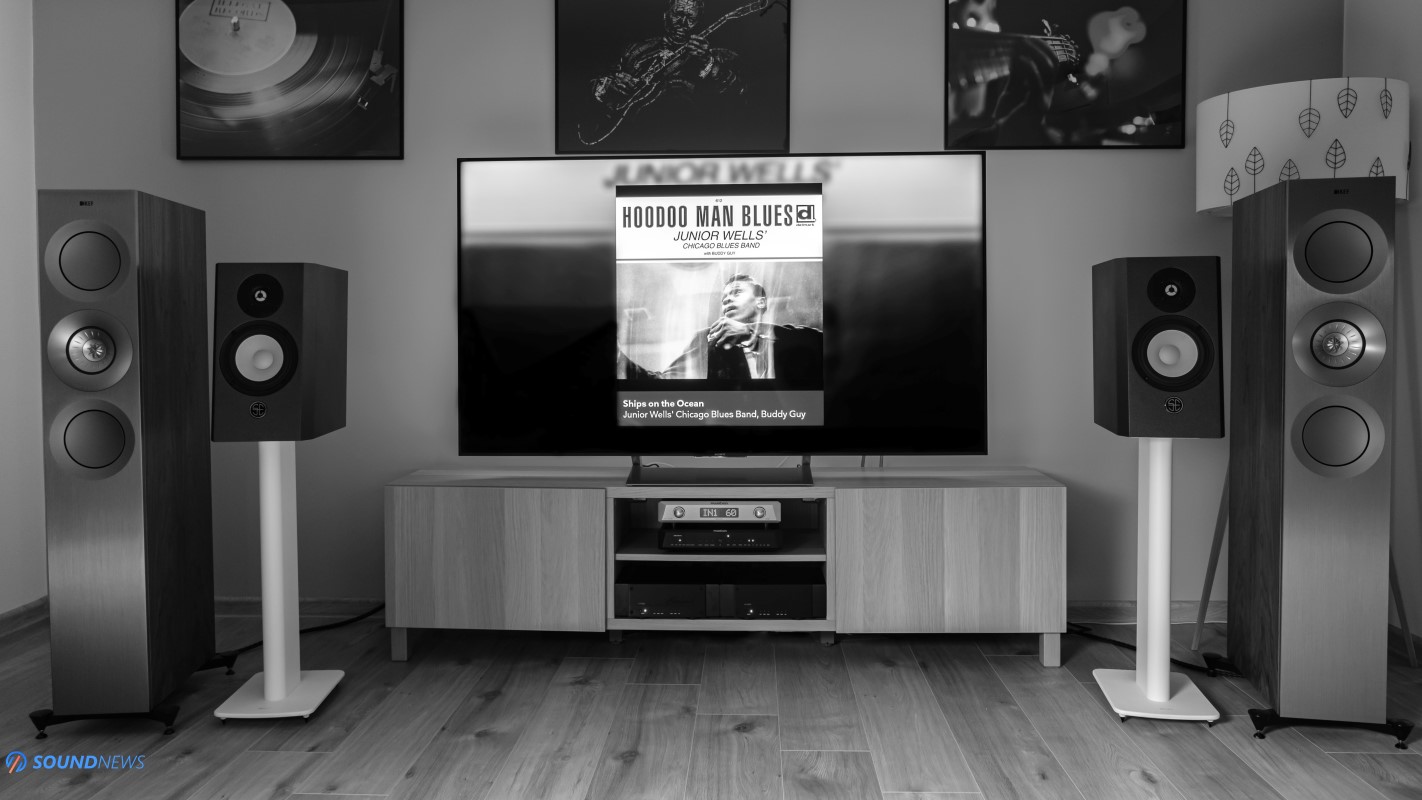
A. Detail Retrieval & Transparency
The biggest fear I’ve had while exchanging the HPA4 with the Monoceros is that a super-resolute nature of my setup will be lowered down and some micro-details will be forever lost. I’ve added the Monoceros in between the Aquarius and two AHB2 power amps and my heart starting beating faster. A preamplifier might improve several things, but it can also add noise and distortion into the mix and that’s the last thing I want in my setup. My face brightened up immediately…everything appeared in a crystal-clear manner, low-intensity notes are still dancing around my room and all the imperfections of the older records that I’ve grown with are still in place. Three glasses of whisky and a few albums later and Monoceros is still a super-clean and detailed sounding unit, approaching closely to the Benchmark HPA4 and that is already something special in my book, since HPA4 is considerably more expensive.
That smokey, unpolished and raw delivery of pre-70-ties jazz and blues is present in my room and I’m extremely happy for that. When I’ve went much lower with the volume, all smallest nuances didn’t hide in the shadows, they were still lingering around me and whispering in a language that I understand so well. I was surprised by how balanced my setup sounded in the evening at a much lower SPL. All the fullness and midrange density that Aquarius is capable of wasn’t toned down, not by a single notch. The warmth and naturalness that was coming out of those metallic drivers was through the roof! Never I’ve believed that Reference 3 could sound so smooth and relaxing with the right music and selection of electronics. When Midnight Blue (2012 Remaster) by Kenny Burrell (Qobuz / Tidal) hit my playlist, the complete relaxation of body and mind was so obvious that I’ve discarded all my plans for the evening and decided that I needed to re-listen my pre-70-ties blues collection once again. With the Monoceros in place, the whole record had a great feeling of reflective calm, with intricate guitar lines responding to that double bass contribution. The whole album carried a deep mood and a melancholy theme, leaving a long-lasting impact on me, despite its brief duration. Midnight Blue was perhaps the most memorable track of the whole recording, as it’s more up-beat than most with the leader stretching out for most of the track. I was genuinely amazed that the smallest subtleties remained intact, while boosting the presence like the band played for one last time and only for me…
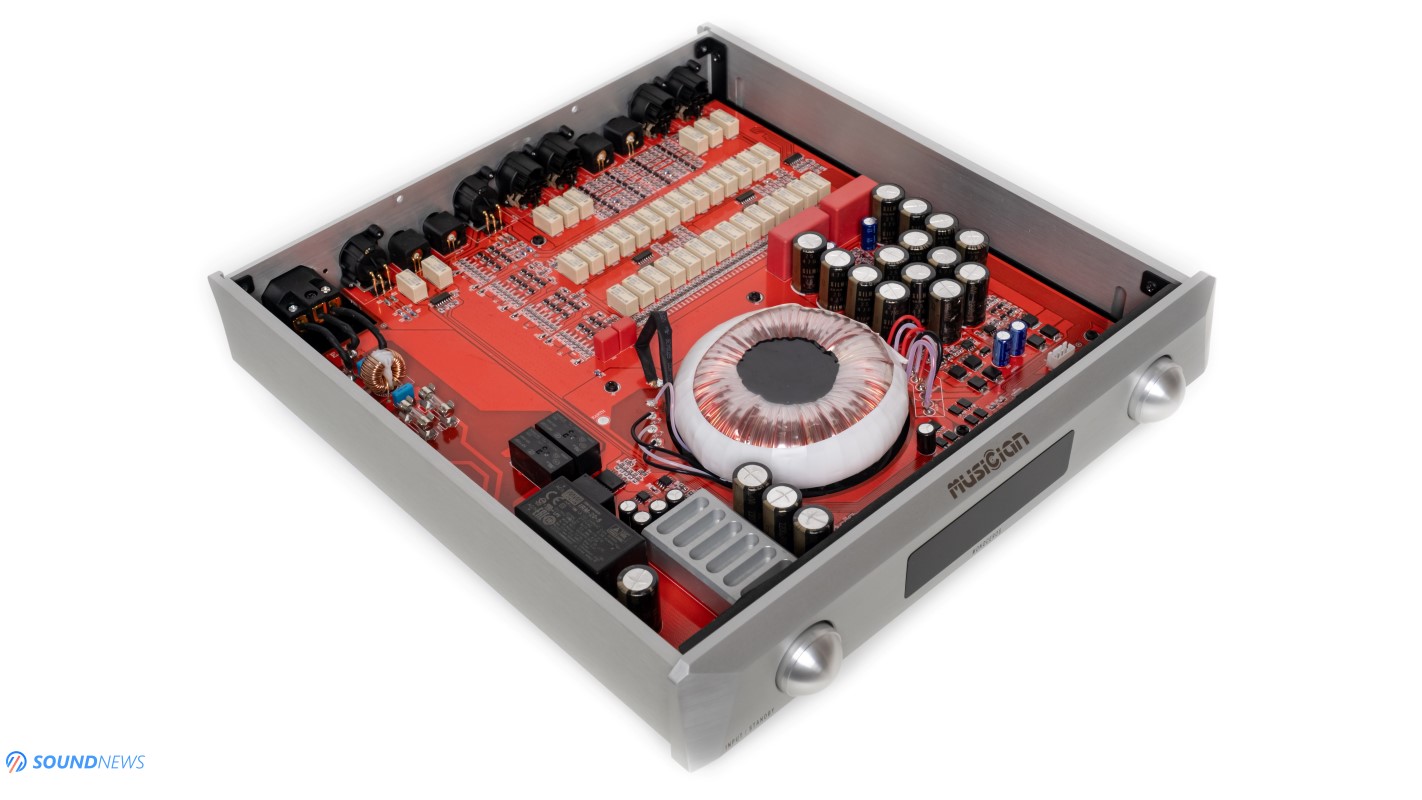
B. Transient Response
While Aquarius is an unnaturally fast sounding unit for an R-2R ladder DAC, I’ve always felt that it needs just a little bit of help to inject a higher enthusiasm down low. While its bass notes were reaching subterranean territory, I’ve always wanted more raw energy in there and a punchier impact into my chest. HPA4 already improved all those points, but Monoceros was splitting bass notes into multiple layers, delivering the lowest octaves in waves towards my listening spot. It didn’t boost only bass quantity, but improved its layering, it added some air around it, added some empty spaces between those notes, ultimately improving the bass quality too. Most importantly, Monoceros brought to the table an unforgettable bass slam, that made me re-consider the whole transient response thing with R-2R units. Putting all the jokes and bottles aside, Monoceros brought a much-needed impact down low and completely discarded the tiniest traces of “Digitus” in my setup, transforming my digital music collection in live-performances in the comfort of my home. If I could still nitpick about a thing or two about the Aquarius as a DAC only unit, Monoceros levels all its cons and transforms it into a much nicer digital creature. I clearly remember liking the sheer bass slam of the Rockna Wavelight versus the Aquarius, but I’m not sure I would pick the same words with the Monoceros on top of it. The later brings density in the entire audible range, smoothing out digital glare and filling up the empty spaces with music.
Musician’s preamp improved the transient response of Aquarius and from decent kick in the chest, Musician’s duo shapeshifted into Kung-Fu masters, kicking and punching my body with a much higher force. Aquarius seems to no longer fight in the light-weight category, as it gained weight and muscle mass and that was felt immediately after pressing play.
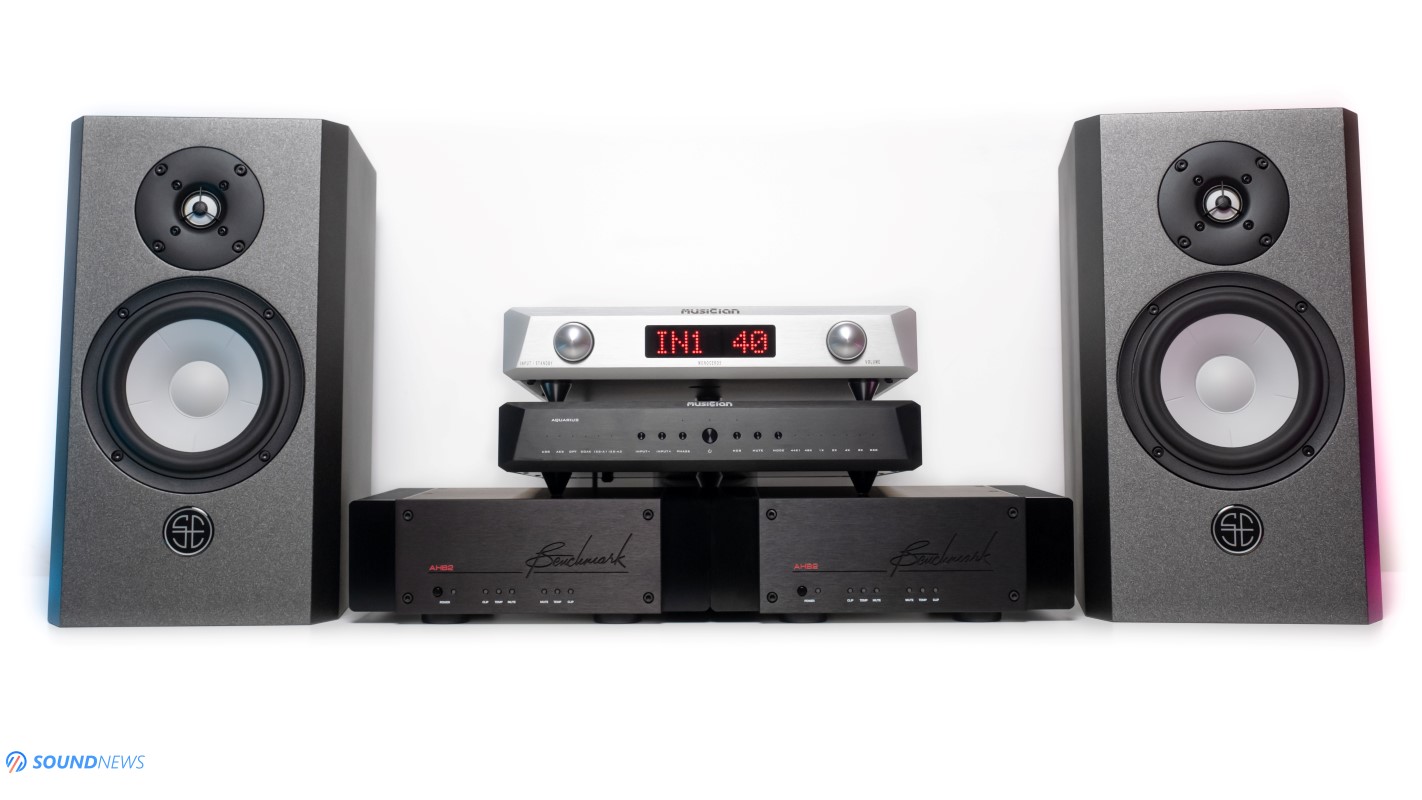
C. Tonality
After using the Monoceros with several digital sources, it was obvious that besides being clean and transparent, punchy and impactful, it added some organic matter into my music, that is very difficult to describe. It was like adding soul and warmth in a cold or bright sounding setup, like switching from a Class-D amplifier to a transistor-based Class-A monster or like an invisible vacuum-tube was planted inside your DAC without knowing about it. With Monoceros in place, music felt weightier, bass and midrange felt more playful, while scaring away grittiness and listening fatigue.
Considering its all-discrete circuitry and Class-A working principle, it shouldn’t be a surprise to anyone that it added texture, meat in the midrange, weight and fullness everywhere else. Monoceros has a high-density type of sound, filling out the gaps in the room, bringing a feeling of calm and effortlessness, while disentangling even the most crowded music and making it bigger sounding.
Audiomotiv Crescendo UNO is a detail-oriented bookshelf loudspeaker, sounding much bigger to its actual size thanks to a passive radiator mounted on its back. Since we are dealing with less drivers and with a less demanding load, Monoceros didn’t alter as much the final outcome, adding only a nicer grip and pushing the low-end closer to the listener.
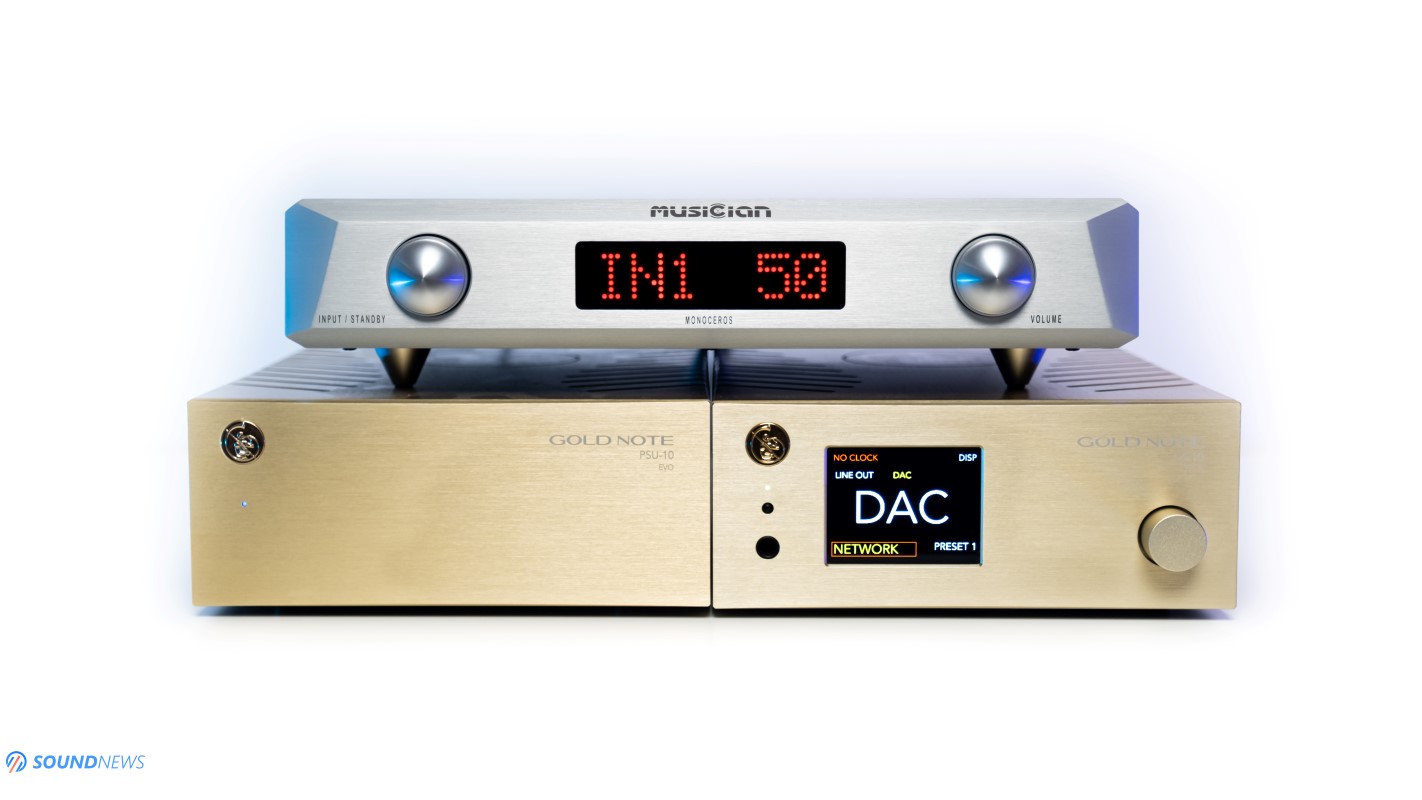
III. Preamplifiers aren’t needed Everywhere
On very rare occasions you can stumble upon all-in-one units that have proper line-amplifier circuits inside. It so happens that I have two such units at my disposal and those are the Matrix Audio Element X and the Gold Note DS-10 Plus powered by the PS-10 Evo power supply. I can complain about a less than perfect streaming app of the Matrix, or about a less revealing DAC section of the DS-10 and maybe for some other features, but I’ve always felt that their preamplifier stages were really well-made. Particularly, Element X always stood out with its preamp stage, offering up to 15 V of pure analog gain and that really worked as magic with several power amplifiers.
Adding a preamp as Monoceros to digital creatures as these, didn’t change a lot of things, with the exception of tonality that tilted towards warmth. Everything that was clear and very different with the Aquarius, became a guess game with units like these. Personally, I wouldn’t add a preamplifier to such devices, as it wouldn’t improve my listening experience that much. There are many other units that have great line-amplifier stages, but usually those cost north of ~$4000.
It really depends on which source are you using with it and what amplifier and loudspeakers are following. The final lesson is an easy one: if you source has a higher output impedance (say higher than 200 Ohms), offers a weaker signal compared to industry standard 2V via RCA and 4V via XLR and uses an oversimplified volume attenuation, then Monoceros would improve their performance in a top-notch stereo setup. Obviously, with most R-2R converters you have only two options: using integrated amplifiers, or going with a Preamp + Power amp route. Musician R2R DACs have a higher than usual output impedance (1250 Ohms via XLR) and with units like these, Monoceros would easily improve their pace, rhythm and timing, aiding the amp that follows and unleashing the true potential of your stereo setup.
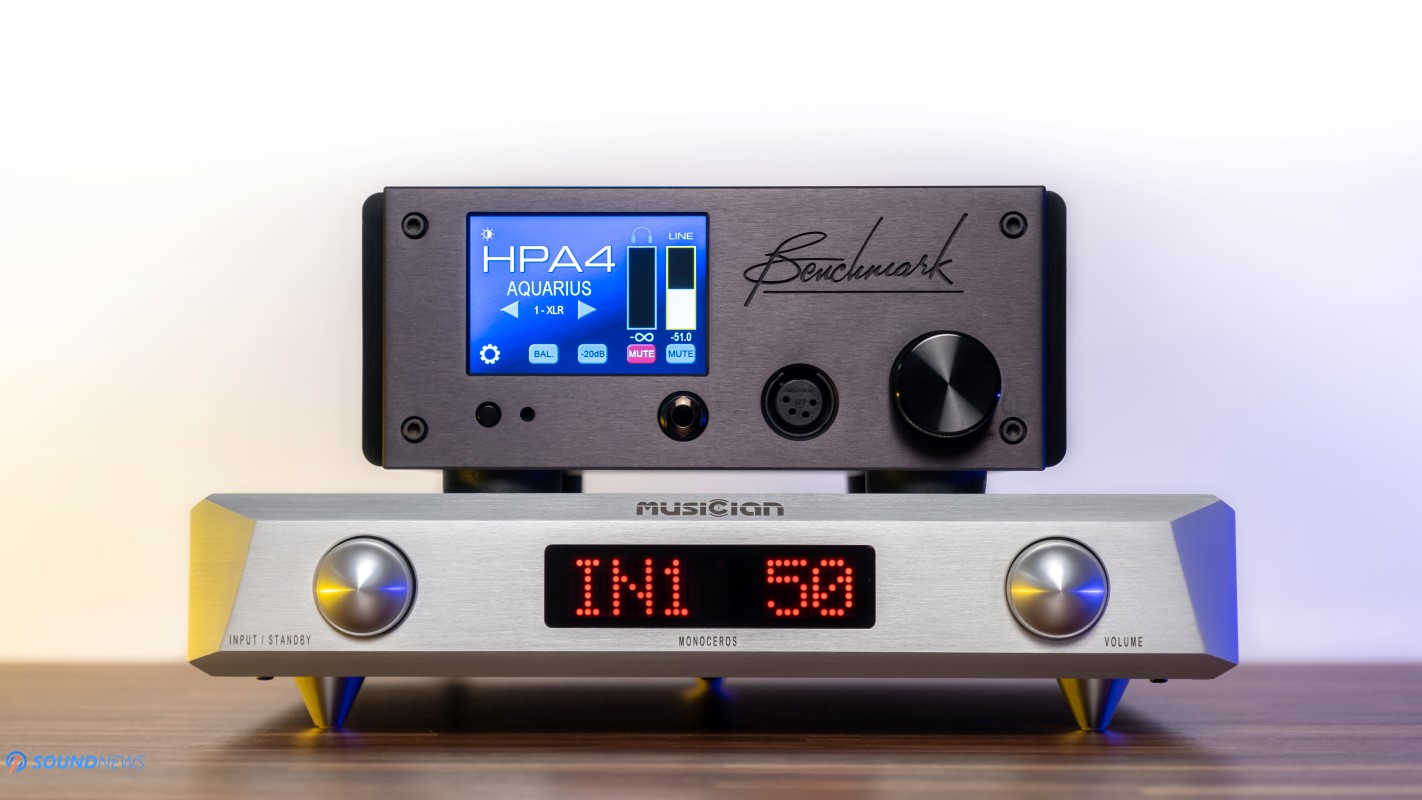
IV. A Comparison
Musician Monoceros ($1170 / €1300) VS Benchmark HPA4 ($3000 / €3500)
For this test, I went back to the Aquarius since it shown the biggest performance gains with both units. I’ve used the same balanced interconnect cables, the same power cables and the rest of the chain remained unchanged.
When it comes to looks and build quality, Monoceros stood out immediately, having much thicker aluminum plates and a bolder stance altogether. When I’m grabbing them, I could easier see where all the money went with the Monoceros, it is built like a tank, it uses high-quality connectors and AC inlet and it just smells Hi-Fi from a mile away. HPA4 on the other hand is much smaller (could be a big plus for some), there are some rough edges, making it look raw and unpolished, catering more to the Pro Audio world.
When it comes to features, HPA4 is winning massively in every possible way: it offers more analog inputs and outputs, a clever multi-touch user interface and plenty of features, that are missing on the Monoceros. HPA4 adds a high-quality headphone amplifier section and it uses the same Omron analog-relays for a perfect volume control. Instead of 60 steps, HPA4 offers 128 steps and it can also boost the incoming source voltage by up to 10 dB – a super handy feature for low-voltage sources. HPA4 is without a doubt a more feature-packed unit, hence the substantial price difference between the two.
Benchmark Media had a single goal in their mind while developing their HPA4 and LA4 line-amplifiers: making high-end preamplifiers that would completely disappear from your acoustic chain, boosting or lowering the gain setting, without adding or subtracting anything. I can say with certainty that HPA4 doesn’t have a character of its own, as with it you’ll be listening to your source, no less and no more. HPA4 is an achromatic unit, never boosting any particular frequency range, always leaving it unchanged. In this particular setup, it added a faster pace, instant decays of the notes, a decent slam in the lowest octaves, all while being crystal-clear sounding and without raising noise or distortion. It seems that HPA4 wasn’t increasing or decreasing the soundstage level and left it as it was.
Musician team had a similar goal in their mind, but its fully discrete circuitry and Class-A working principle said its last word: Monoceros added muscle mass, it added more weight down low, it was more impactful sounding and I could easier feel its physical manifestation in my room. It was (in a way) more engaging sounding, adding joy and some fun factor into the mix. While HPA4 didn’t mess with the frequency response, Monoceros added more weight in the midrange, more emotions with vocals and a longer vibration with string-based instruments. On rare occasion some treble glare would make an appearance with the HPA4, but that would never happen with the Monoceros. I’ve heard exactly the same treble information with it, but it never offended my ears, not even a little bit. By comparison, Monoceros was smoothing out the rough edges, bringing a sensation of complete relaxation. With it in place, there was a feeling that I’ve replaced my AHB2 power amplifiers, with meaner sounding Class-A amplifiers…as there would be constantly more meat on the bone and more air would travel around. The most important thing to know is that Musician’s preamp didn’t add noise or distortion, it wasn’t messing with SNR and appeared as a clean sounding unit, never hurting the dynamic range of the source.
In the end, it really depends on what you want to achieve with your setup, one might like the dead-neutral and colorless presentation of the HPA4/LA4, while others might want more soul, flow and texture with their music and that’s exactly what Monoceros is doing.
Even if Monoceros was juicier and bolder sounding with my loudspeakers, performance wise, I find them on same level. They have different skill sets, but always perform on a very high level. One thing is for sure: whatever you choose, you won’t be disappointed.
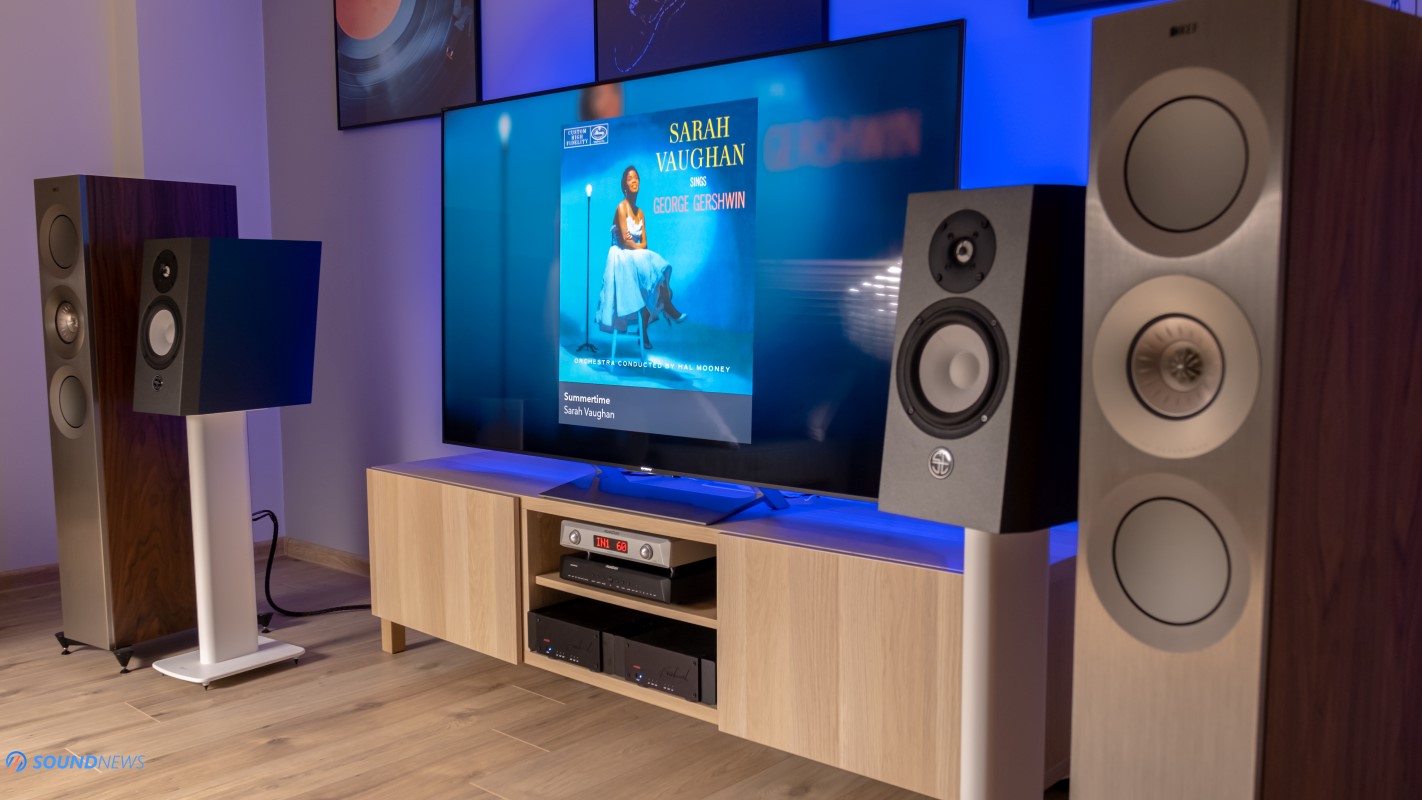
My Conclusion
Immediately after popping its hood and seeing all that wizardry happening in the analog domain, I knew that it would squeeze the last drop out of their Pegasus and Aquarius DACs. Luckily, Monoceros wasn’t made to be used only with their converters, as you can mate it with any other digital or analog source and you can be sure that its bold character and warm tonality would carry over to any setup. In my case, it was transparent and faithful to the source, fully preserving its dynamic range, while never adding noise or distortion into the mix. It induced sweeter harmonics and plenty of liquidity and if that’s what are you chasing for, then you can give it a try.
This is the most charismatic preamplifier that I’ve tried and it is my pleasure to award it our highest badge. Gold Award is fully deserved! Congratulations to Musician’s team and I’m looking forward to their next doings.

Musician Monoceros was kindly provided by their sole world-wide distributor Aoshida-Audio and you can get it from their web-store right here. Considering how much more other makers are charging for their all-discrete preamps, at just $1170, Monoceros looks like a true bargain.
If you get one, please come back and leave a comment, I’m curious to know how it performs in your setup!
PROS:
- Massive and solid looking
- Rock-solid build quality
- Impressive part selection down to the smallest details
- Transparent/detailed sounding, always faithful to the source
- Adds control and focus where there isn’t
- Adds texture and weight everywhere in the FR
- Adds some warmth and liquidity, removing grain and digitus
- Adds bass slam and impact
- Organic and believable sounding
- Wide-open, deep and holographic sounding
- Lacks a noise-floor, never adds distortion
- Highly engaging sounding all the time
- A good selection of I/O, I particularly like double XLR inputs
- Unlocks the full potential of Musician ladder DACs and (including many other R-2R creations)
- You’re getting a lot in return, a true bargain
CONS:
- Adds some coloration into the chain (could be a plus)
- Not all DACs will benefit from it
ASSOCIATED EQUIPMENT:
- DACs: Musician Aquarius, Audiobyte HydraVox & HydraZap, Matrix Audio Element X, Gold Note DS-10 Plus & PSU-10 Evo, Gustard X26 PRO, X16, Topping D90SE, Topping EX5, Burson Timekeeper 3i
- DAPs: FiiO M11 Plus LTD, M15, Shanling M8, M6, M3X
- Headphone Amps: Flux Lab Acoustics Volot, Benchmark HPA4, Singxer SA-1, Burson Soloist 3X, Musician Andromeda, SMSL SP400, Topping A90, Gustard H16
- Preamps: Musician Monoceros, Benchmark HPA4, Topping PRE90
- Power Amps: Benchmark AHB2 (x2), KECES S300, SMSL SA400, Burson Timekeeper 3i
- Loudspeakers: KEF Reference 3, Natural Sound NS-17, Sound of Eden Crescendo UNO
- IEMs: FiiO FA9, FH7, FH5S, FD5, Meze Rai Penta, Rai Solo, LittleDot Cu KIS, Hiby Crystal 6 & others
- Portable headphones: Sennheiser Momentum 2, Meze 99 Classics, Sony WH1000-XM4
- Full-sized headphones: Hifiman Susvara, HE1000SE, Arya, HE400SE, Audeze LCD-4, Erzetich Phobos 2021, Erzetich Mania, Kennerton Wodan, Magni, Gjallarhorn, Vali, M12S, Ollo S4X Reference, Apos Caspian, Sendy Peacock & Aiva
- Interconnects: QED Reference (x2), Topping TCX1 (x2)
- Speaker cables: Kimber PR8, Audioquest Type4
- Power Cables: Isotek EVO3 Premier (x3)
- Balanced Isolation Power Conditioners: PLiXiR Elite BAC1500 (stereo setup), Elite BAC400 (headphone setup)
